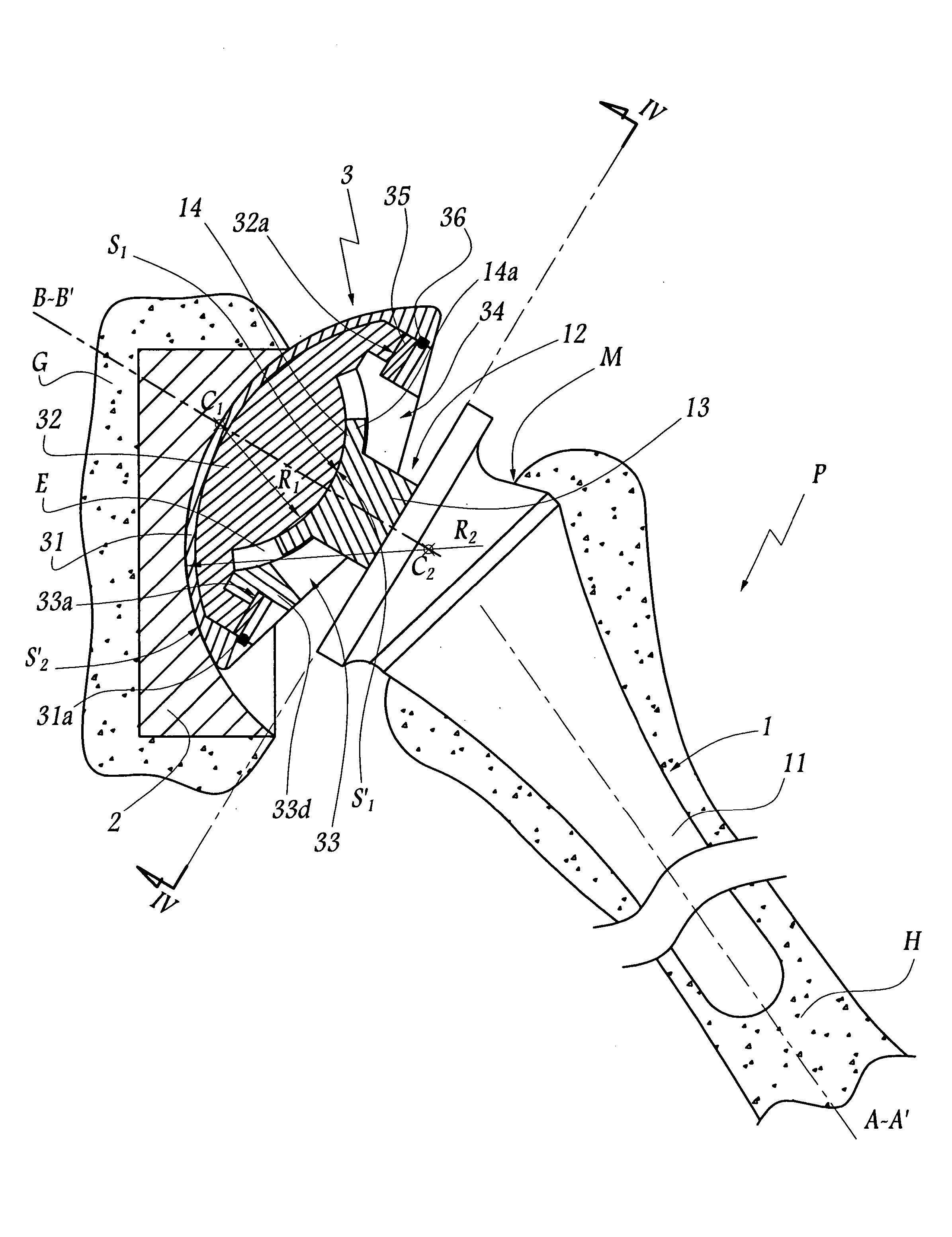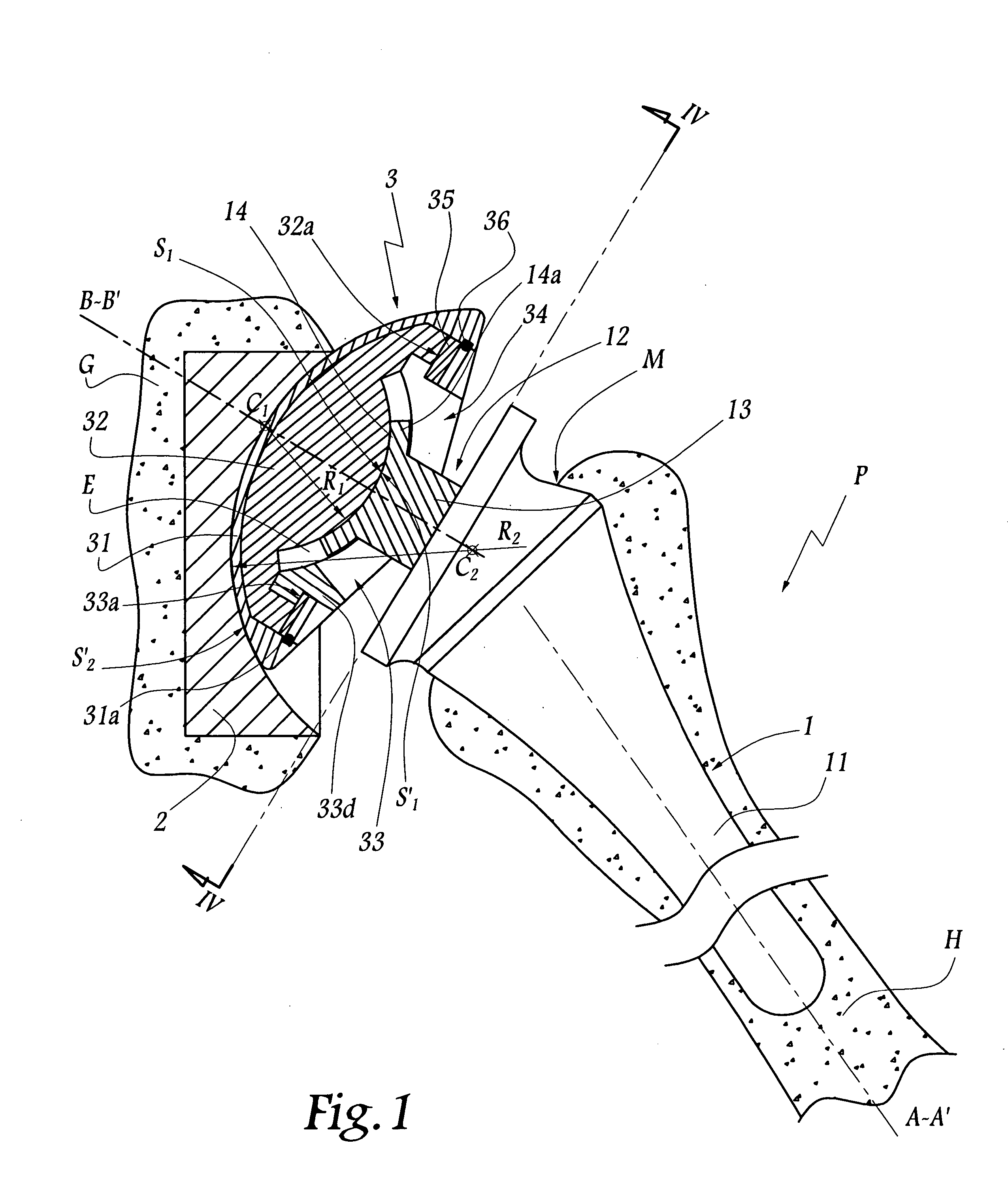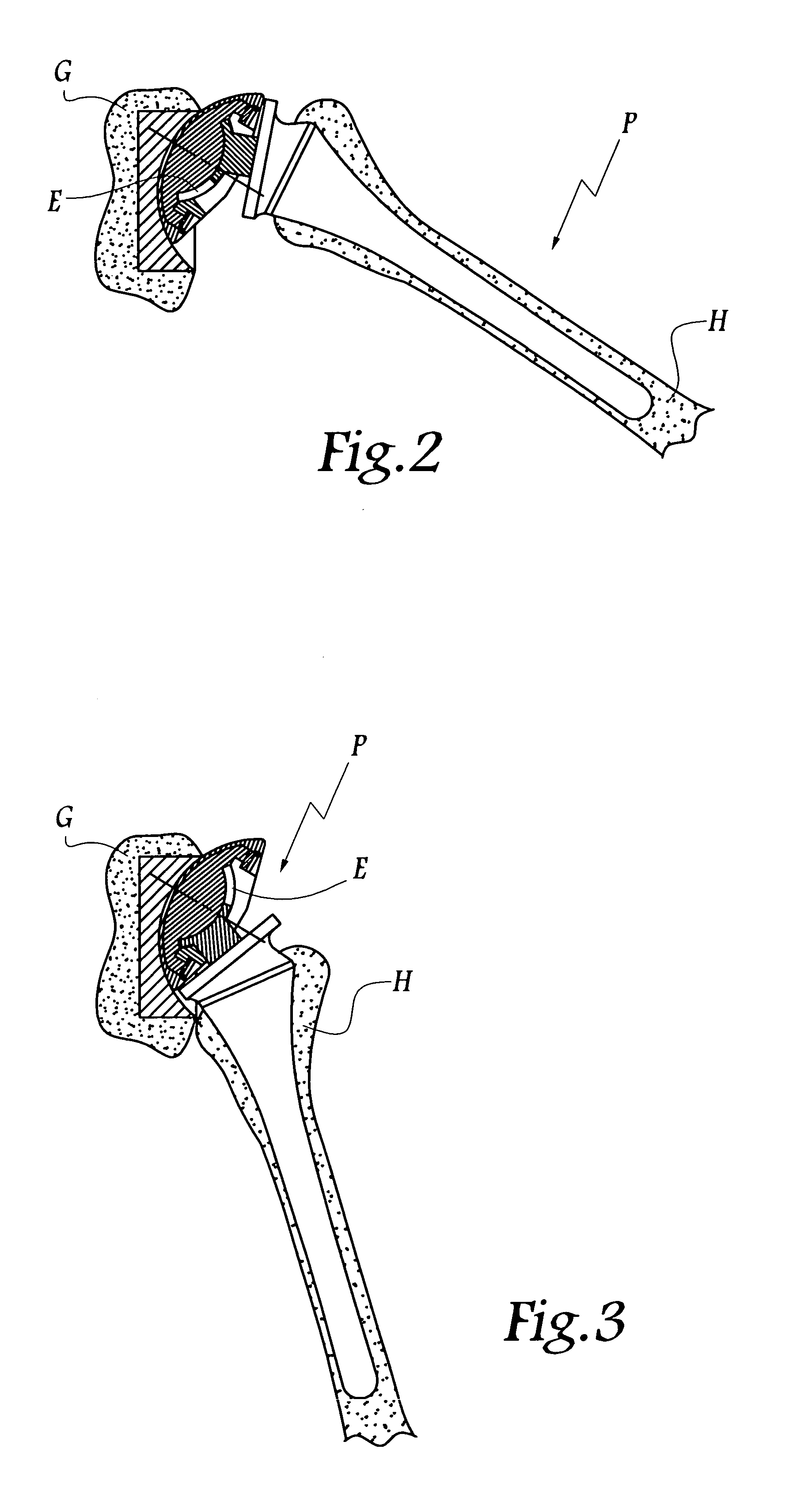Shoulder or hip prosthesis and process for fitting same
a technology for hips and shoulders, applied in the field of shoulder or hip prosthesis, can solve the problems of unstable prosthesis and very invasive glenoid component of such a surfa
- Summary
- Abstract
- Description
- Claims
- Application Information
AI Technical Summary
Benefits of technology
Problems solved by technology
Method used
Image
Examples
first embodiment
[0058] As in the first embodiment, the plate 114 is retained in abutment on the surface S′1 during the whole movement of abduction, including in central position corresponding to that of FIG. 1.
[0059] In the third embodiment of the invention shown in FIGS. 9 and 10, elements similar to those of the first embodiment bear identical references increased by 200. This embodiment concerns a shoulder prosthesis whose intermediate component 203 comprises a cup 231 and a ring 233 whose central opening 234 is of substantially elliptical shape, with its longitudinal axis X234-X′234 substantially parallel to the sagittal plane.
[0060] The sub-assembly 212 of the humeral component 201, which forms a surface of articulation S1 adapted to cooperate with the surface of articular S′1 defined by the insert 232 of the component 203, is more particularly visible in FIG. 9. Its plate 214 is of substantially elliptical shape, its neck 313 being circular; The neck 213 is adapted to be immobilized on a fla...
second embodiment
[0063] The neck 213 and the flange 215 may be connected before or after the plate 214 is applied against the surface S′1. This also applies to the
[0064] According to a variant of the invention (not shown), the flange 215 and the part 211 intended to be anchored in the medullary cavity are in one piece. According to another variant, the neck 213 is introduced directly in a housing formed by the part 211.
[0065] In the fourth embodiment of the invention shown in FIG. 11, elements similar to those of the first embodiment bear identical references. The medullary stem 11 defines a truncated housing 11a centred on an axis X11 and bordered by a substantially annular bearing surface 11b. The plate 14 and the neck 13 are in one piece with the flange 15 and with a stud 17 intended to be introduced in the housing 11a and immobilized therein by cooperation of shapes. The assembly formed by elements 13, 14, 15 and 17 is visible in plan view in FIG. 12. The outer surface of the stud 17 is truncat...
PUM
 Login to View More
Login to View More Abstract
Description
Claims
Application Information
 Login to View More
Login to View More - R&D
- Intellectual Property
- Life Sciences
- Materials
- Tech Scout
- Unparalleled Data Quality
- Higher Quality Content
- 60% Fewer Hallucinations
Browse by: Latest US Patents, China's latest patents, Technical Efficacy Thesaurus, Application Domain, Technology Topic, Popular Technical Reports.
© 2025 PatSnap. All rights reserved.Legal|Privacy policy|Modern Slavery Act Transparency Statement|Sitemap|About US| Contact US: help@patsnap.com



